Acute
Work on the building in Mount Park began in 1862. The cost - more than £5,000 - was defrayed by large voluntary subscriptions from the masters and old Harrovians, as well as a capitation tax paid voluntarily by the parents of the pupils.
The Harrow School Sanatorium opened in 1867, one of the first such for a boarding school. It supplemented, but did not replace, the sick rooms at each of the School's boarding houses.
The Sanatorium had 14 beds (or 18 if necessary) for a school of 500 pupils. The ground floor of the two-storey building contained two double wards, a surgeon's room, a convalescent room, a bathroom and separate WC, and Matron's sitting room and bedroom, all leading off from the hallway. On the first floor were a 3-bedded ward, three 2-bedded wards and a single bed ward, a WC and a nurse's kitchen. The square ward rooms had a ceiling height of 12 feet (3.6 metres) and each ward allowed 1,200 cubic feet (33.6 cubic metres) of space to each bed. Each room was well ventilated.
The basement contained the kitchen, larder and scullery, a knife room, a WC, the laundry, the servants' room, the coach house, tool shed, coal shed and boiler room.
As well as an oak and pitch pine unenclosed staircase, the building had a lift. Carpets and curtains were avoided as much as possible, with the floors stained and varnished; the hall was partly tiled.
The building was extended in the early 1890s.
In 1903 it was proposed to build a new sanatorium, but nothing came of the idea.
During the winter term of 1918 an influenza
epidemic broke out. Some 500-600 people in the School were
affected (at one time 300 boys were simultaneously ill), including a
great number of servants and masters with their wives and families.
The Sanatorium was full and hospital accommodation impossible.
With the unavailability of trained nurses and with many servants
ill, the boys' mothers took over the work of the cooks, kitchen and
scullery maids, and nurses and matrons, doing what was needed at this
time.
After this, it was decided to spend £20,000 on a new sanatorium, although another ten years would pass before this plan was realized.
In 1929 the Governors of the School purchased Bowden House for use as a sanatorium. The 19th century building, once known as Sudbury Hill House, had been the residence of Dr Hugh Crichton-Miller, who ran the adjacent Bowden House nursing home. Part of the grounds of the new Sanatorium was given over as playing fields of 10 acres for the School.
The Sanatorium closed in 1979.
Present
status (March 2009)
The first Sanatorium in Mount Park had become derelict by 1971. The building was demolished and its site redeveloped with new housing. It is now part of the Mount Park housing complex with private roads leading to various individual houses.
The second Sanatorium, the former Bowden House School building, was sold to property developers. A year later, in 1980, a devastating fire destroyed most of the building, but its facades survived. The property and its grounds were sold again to Milne and Nicholls, on the condition that the building be restored.
The Sanatorium has been converted into three residences - Nos. 21, 22 and 23 Harrow Fields Gardens.
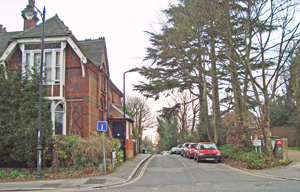
The mouth of Mount Park Avenue, leading to the site of the first Sanatorium.
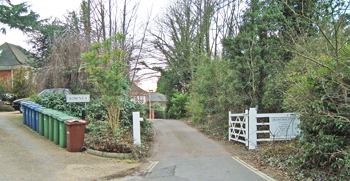
Mount Park Avenue leads to private gated communities (above and below).
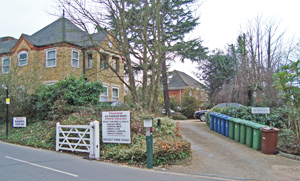
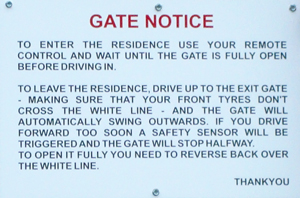
Instructions on how to open the gates (which seem to be permanently open).
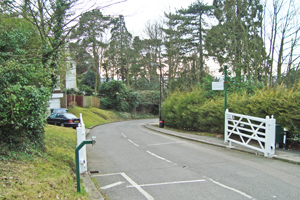
The site of the first Sanatorium is along this fork in the road.
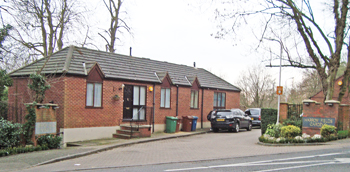
The mouth of Harrow Fields Gardens off Sudbury Hill, the site of the second Sanatorium.
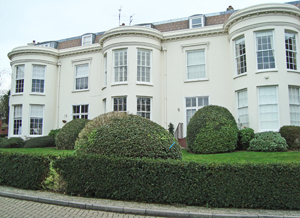
The rear elevation of the second Sanatorium was restored after the fire in 1980.
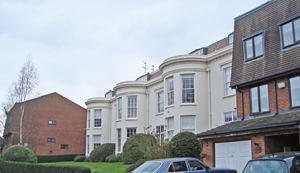
The building is surrounded by new housing, which was completed in the mid 1980s.
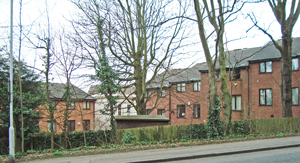
The white building can just be seen from Sudbury Hill.
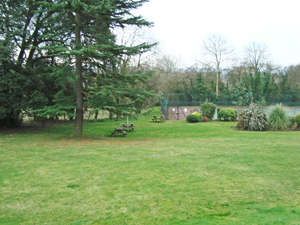
The view of the grounds to the south.
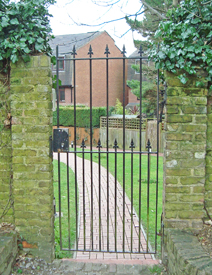
The old wall and gateway on the northern side.
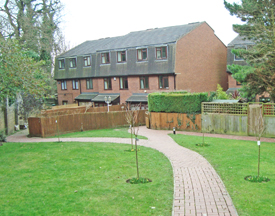
The garden at the north side.
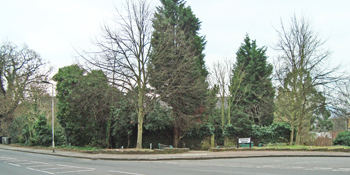
The northern boundary.
(Author unstated) 1864 Clarendon Report. London, H.M.S.O., 49.
(Author unstated) 1919 The Public School Hospital. The Hospital, 5th April, 3-4.
(Author unstated) 1930 A playing field for the school. The Lyonian (July), 34.
Odlum D (undated) Chapter 40 'Bowden House, Harrow. In: The Expanding Field of Mental Health in England and Wales, 50 Years of Progress, 1918-1968. Unpublished document MS 7913/42 filed at the Wellcome Library.
Tyerman C 2000 A History of Harrow School, 1324-1991. Oxford University Press.
https://collage.cityoflondon.gov.uk (1)
https://collage.cityoflondon.gov.uk (2)
https://collage.cityoflondon.gov.uk (3)
https://historic-hospitals.com
www.amazon.com
www.british-history.ac.uk
www.harrow.gov.uk
www.harrowfieldsgardens.btck.co.uk
Return to home page